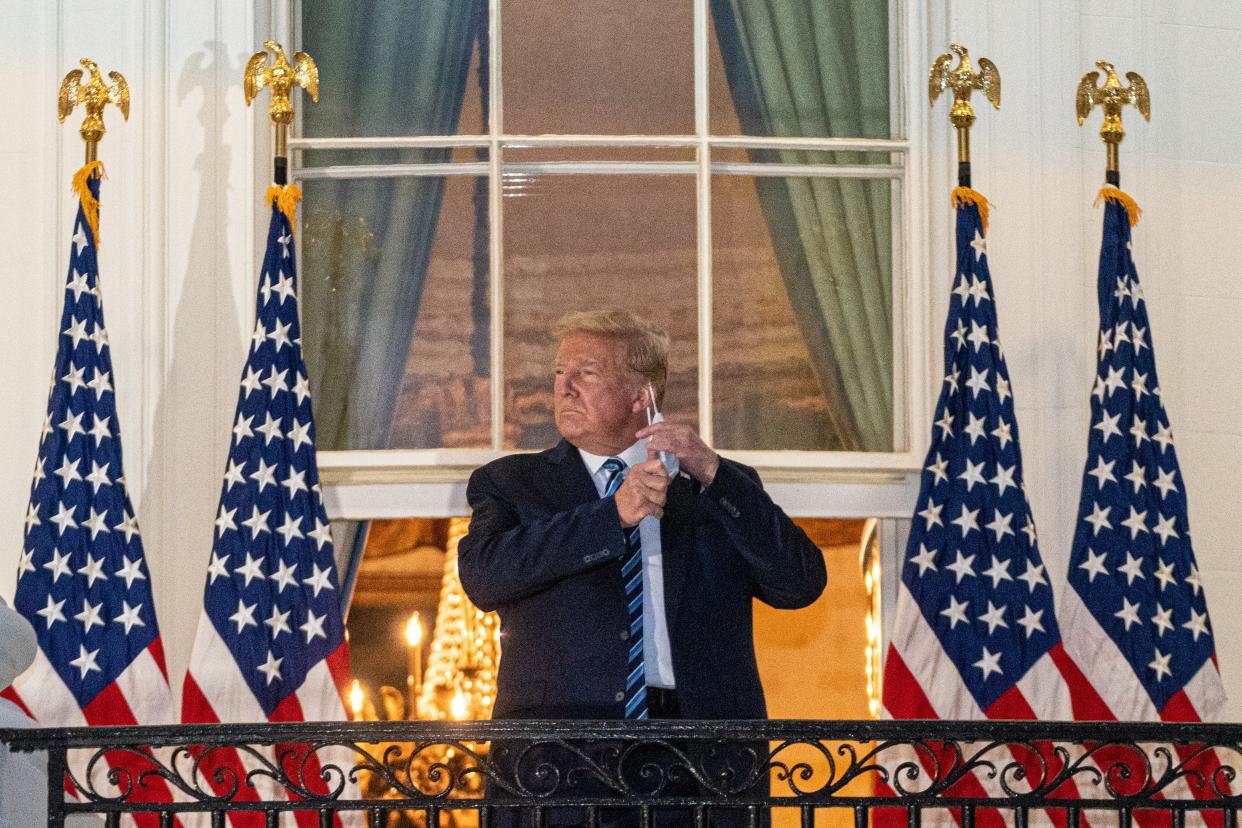Four times Donald Trump risked spreading coronavirus moments after leaving Walter Reed

Donald Trump returned to the White House only a few days after being admitted to Walter Reed Medical Centre, and before he had been declared symptom-free – though his physician remained cagey about his true condition.
By leaving the hospital when he did, he may have exposed those around him to the virus he is fighting many times over. And at various points, he has been seen apparently violating CDC protocols for those infected.
Touching the handrail
Fingering the public handrail on the steps of Walter Reed as he made his way out, Mr Trump left the hospital to return to a White House where more staff have tested positive in the days since he was taken into inpatient care, and where increased measures are now being taken to protect people who work there.
Then there are the consequences of his decision to discharge himself for those closest to him. Mr Trump’s Sunday afternoon ride around a crowd of supporters in a motorcade was criticised for putting his Secret Service detail at risk, with one attending physician at the medical centre calling it “insanity” for service agents to be locked in a hermetically sealed car with a Covid patient.
Secret Service exposure
But on Monday, the president took things a step further, not only taking a car ride with agents from his detail – one of whom held the door open for him – but then travelling aboard the presidential helicopter, Marine One, again with a masked escort.
The agents who shared vehicles with Mr Trump, albeit while wearing full protective equipment, have now been closely exposed to a possibly symptomatic coronavirus infectee. Under CDC guidelines, this would oblige them to quarantine for 14 days.
Removing his mask
Finally, there was the episode of Mr Trump’s appearance on the White House’s Truman balcony, which saw him remove his mask for the cameras – before heading inside to a room where several people, including at least one photographer, could be seen waiting.
Close contact with camera crew
He could be seen on video reshooting the moment he walked into the White House, exposing those recording it, despite his spokeswoman’s claims he was alone.
It is not publicly known what exactly Mr Trump has done since returning home, and his plan to isolate or quarantine has not been made clear. According to the CDC, those confirmed to have contracted Covid-19 and developed symptoms must stay away from others for 10 days after their symptoms appeared and 24 hours with no fever.
Based on this, even if his symptoms had fully abated before he returned home, Mr Trump would still have to be in quarantine until at least the start of next week – assuming that he became symptomatic only at the end of last week. The exact nature of his current symptoms is unknown.
Asked what will happen to the president now, White House spokesperson Sarah A. Matthews said: “The American people can rest assured with the president’s return that the White House is taking every precaution necessary to protect not only him and the first family, but every staff member working on the complex to support the federal government’s operations consistent with CDC guidelines and best practices.
“Physical access to the president will be significantly limited and appropriate PPE will be worn when near him.
“President Trump will continue to receive around-the-clock medical care and monitoring from his physician and a team of dedicated physicians and nurses in the White House Medical Unit who function out of a state-of-the-art clinic, which includes many of the things a person would see in an urgent care clinic and much more, to ensure the commander-in-chief makes a full recovery and can continue to discharge his duties.”
Read more
Trump dubbed ‘Covidiot in chief’ after telling Americans not to be afraid of coronavirus
Trump appears breathless in balcony video after blocking doctors from revealing details of infection


